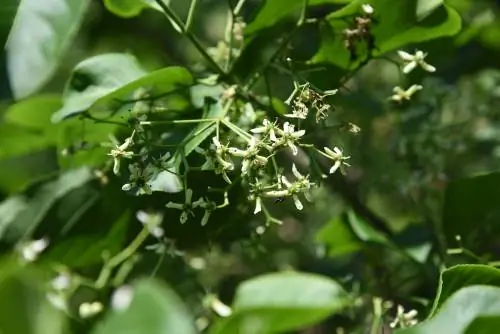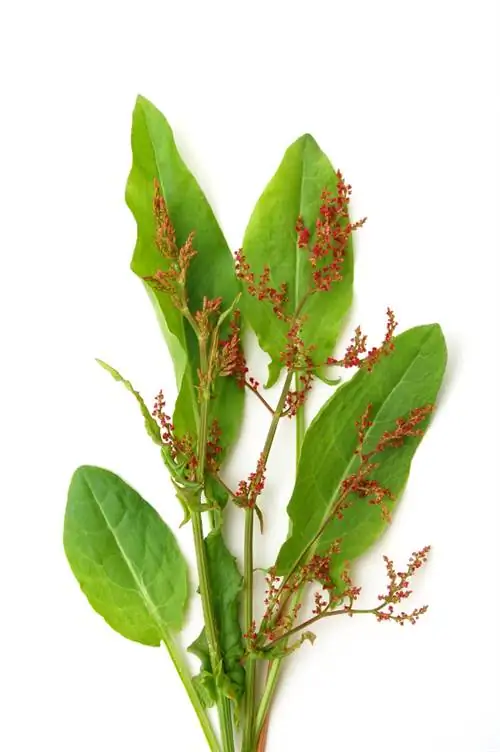- Author admin [email protected].
- Public 2023-12-16 16:46.
- Last modified 2025-01-23 11:22.
Many people only know the Pfaffenhütchen because of its eye-catching fruits. Before these emerge, tiny flowers develop. They are so inconspicuous and yet have an important meaning. With the right choice of soil and appropriate care measures you can promote flowering.

What does the flower of the Pfaffenhütchen look like?
The flower of the Pfaffenhütchen shows itself in inconspicuous, hermaphrodite flowers with green-colored sepals and greenish to white-colored petals. Between May and June they attract flies, ants and honey bees as pollinators with their sweet-smelling nectar.
Appearance
Pfaffenhütchen develop inconspicuous flowers that are hermaphrodite. They consist of four green-colored sepals and are no longer than a millimeter long. The four petals grow up to five millimeters long. They are greenish to white in color. The flower center shimmers greenish. The individual flowers are grouped in two to six loose inflorescences, which are called umbels because of their shape.
Ecology
Pfaffenhütchen have specialized in special pollinators with their inconspicuous flowers. They do not develop conspicuous petals because they only attract small insects with their sweet-smelling nectar. When Pfaffenhütchen bloom between May and June, flies and ants are among the most frequent flower visitors. Honey bees also use the flowers as a food source. The fruits are often eaten by robins, thrushes and tits.
Soil requirements
The location is of great importance so that the Pfaffenhütchen shines in full bloom. The shrub prefers substrates rich in lime and nutrients. They prefer fresh to moist soils with a high clay content. They have no problems with sandy soils, but the growth potential of the bushes is limited on this soil. Even drier conditions do not cause any problems for the tree. This makes the Pfaffenhütchen one of the few shrubs that adapt well to the given conditions. Higher s alt levels in the soil are tolerated.
Stimulating flowering through pruning measures:
- remove diseased and dead branches
- thinning annually
- carry out topiary cuts all year round






